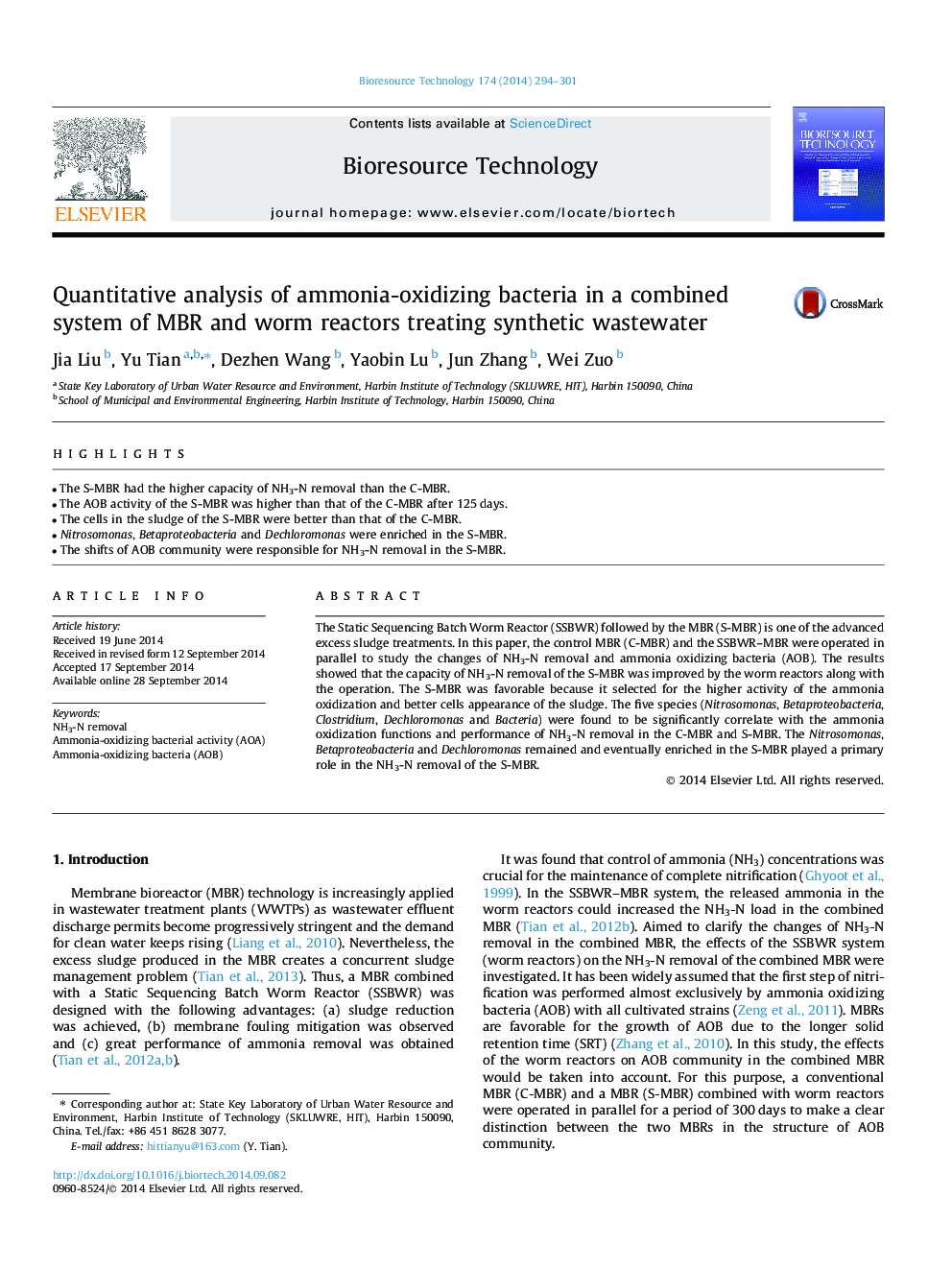| Article ID | Journal | Published Year | Pages | File Type |
|---|---|---|---|---|
| 7075832 | Bioresource Technology | 2014 | 8 Pages |
Abstract
The Static Sequencing Batch Worm Reactor (SSBWR) followed by the MBR (S-MBR) is one of the advanced excess sludge treatments. In this paper, the control MBR (C-MBR) and the SSBWR-MBR were operated in parallel to study the changes of NH3-N removal and ammonia oxidizing bacteria (AOB). The results showed that the capacity of NH3-N removal of the S-MBR was improved by the worm reactors along with the operation. The S-MBR was favorable because it selected for the higher activity of the ammonia oxidization and better cells appearance of the sludge. The five species (Nitrosomonas, Betaproteobacteria, Clostridium, Dechloromonas and Bacteria) were found to be significantly correlate with the ammonia oxidization functions and performance of NH3-N removal in the C-MBR and S-MBR. The Nitrosomonas, Betaproteobacteria and Dechloromonas remained and eventually enriched in the S-MBR played a primary role in the NH3-N removal of the S-MBR.
Keywords
Related Topics
Physical Sciences and Engineering
Chemical Engineering
Process Chemistry and Technology
Authors
Jia Liu, Yu Tian, Dezhen Wang, Yaobin Lu, Jun Zhang, Wei Zuo,
